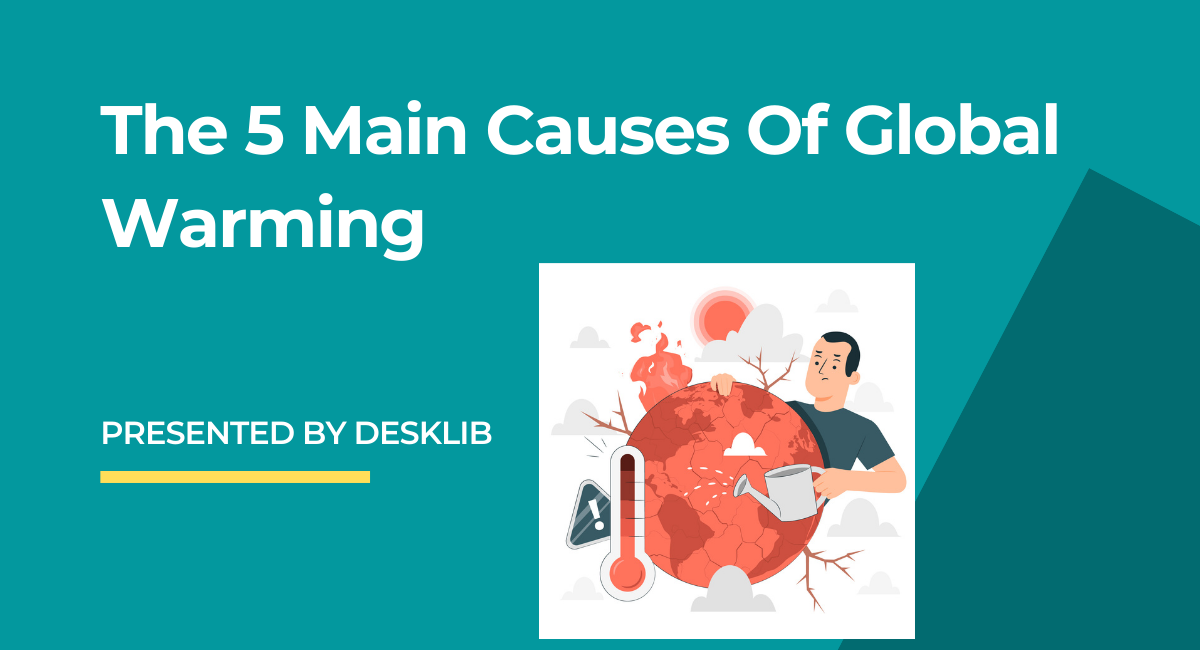
Our planet is becoming warmer and human activities are among the main factors that are contributing to global warming. This report is according to the bulk of the world’s scientific community. A phenomenon known as the greenhouse effect is responsible for the increase in global warming. Due to the release of gases that prevent ground heat from dissipating.
Water vapor, carbon dioxide, methane, nitrogen oxide, and chlorofluorocarbons (CFCs) are among the gases most responsible for global warming. The burning of fossil fuels, as well as agricultural and industrial activities, contributes to their production. In addition to human activities, natural processes lead to the creation of greenhouse gases and contribute to global warming.
Also Read: Why Travelling Is Important?
What is Global Warming?
Global annual temperatures have increased by about 1 degree Celsius since the Industrial Revolution or about 2 degrees Fahrenheit. It rose 0.07 degrees Celsius (0.13 degrees Fahrenheit) on average every 10 years between 1880-the year that accurate records began- and 1980. Over the last 40 years, however, the rate of increase has more than doubled: For the last decade, global temperatures have risen by 0.18 degrees Celsius.
Main 5 Causes of Global Warming
The reason for global warming is that carbon dioxide (CO2) and other air pollutants, which accumulate in the atmosphere, absorb sunlight and solar radiation that bounces off the surface of the earth. These rays would normally escape into space. Nevertheless, these pollutants, which can last in the atmosphere for decades to centuries, trap the heat and increase global warming. Heat-trapping gases, such as carbon dioxide, methane, nitrous oxide, water vapor, and synthetic fluorinated gases cause Climate Change. The greenhouse effect takes occurs due to these greenhouse gases.
Cause 1: Variations in the Sun’s Intensity
The sun provides most of the Earth’s warmth, so it stands to reason that our home star might play a role in global warming. Even though solar energy fluctuates and may have caused warming in the past, NASA and the Intergovernmental Panel on Climate Change (IPCC) believe that this is not a contributing factor to the current trend in global warming. Since 1750, the average energy from the sun has generally remained constant, and the temperature increases are not uniform throughout the atmosphere. As the upper atmosphere cools, the lower atmosphere becomes warmer.
Also read: Brightness Not Working?
Cause 2: Industrial Activity
Humans emit carbon dioxide into the atmosphere. This happens by burning fossil fuels such as coal and petroleum. In addition to heat and electricity, another quarter of this energy is consumed by industrial processes and transportation, which include cars, trucks, trains, and airplanes powered by gasoline or diesel engines. Other than agriculture, cement production, and oil and gas production, the other half of the energy is used for various other purposes. As well as releasing greenhouse gases, these processes also release methane and CFCs, although CFCs have declined in concentration since they were banned in 1988.
Cause 3: Agricultural Activity
Food production practices are another reason for climate change caused by humans. Nitrous oxide is a powerful greenhouse gas emitted by both commercial and organic fertilizers. Among the natural sources of methane, there are also the digestive systems of animals that are raised for meat. As well as landfill decomposition, biomass is also burned to produce it.
Cause 4: Deforestation
Feedlots have been created in previously forested areas due to the increased demand for meat and dairy cattle. Sometimes, trees must be permanently reduced for wood and paper production, and for crop production. By one estimate, 3.5 to 7 billion mature trees are cut each year, absorbing up to 48 pounds of carbon dioxide per year. Scientific American reports that deforestation contributes 15 percent to greenhouse gas emissions.
Cause 5: Earth’s Own Feedback Loop
Due to rising temperatures, the atmosphere is able to hold more water, which is already a major greenhouse gas. Global warming accelerates as a result of this feedback loop. Climate change also produces more cloud cover, rainstorms, and other effects. Water is less reflective than ice, so its surface is exposed as the atmosphere warms. Oceans also become warmer as a result of the sun’s heat absorption by the water.
Linkage of Global Warming with extreme weather
- Scientists are in agreement that climate change fuels more frequent and intense heatwaves, droughts, heavier rainfall, and stronger hurricanes.
- In 2015, scientists concluded that global warming had intensified a long drought in California by 15 to 20 percent-the state’s worst drought in 1,200 years. Over the past century, the odds of a similar drought have almost doubled. We are now confidently able to attribute extreme weather events, like heat waves, droughts, and heavy precipitation, to climate change. This is as reported by the National Academies of Science, Engineering, and Medicine published in 2016.
- Temperatures in the earth’s oceans are rising, too, which means tropical storms can get stronger. Thus, global warming can result in a category 3 storm becoming a category 4 one.
- A record-breaking 30 tropical storms, six major hurricanes, and 13 hurricanes were recorded during the 2020 Atlantic hurricane season. Intense hurricanes are more destructive and lead to more deaths. 22 weather and climate events caused billions of dollars in damage. This event hit the United States in 2020.
- But 2017 is the costliest on record and among the deadliest, too: the three tropical storms (Hurricane Harvey, Irma, and Maria) combined to cause nearly $300 billion in damage and to kill over 3,300 people. We can see the effects of global warming everywhere. Many thousands of people have died as a result of extreme heatwaves around the world in recent years.
- The Antarctic has lost nearly four trillion metric tons of ice since the 1990s, which is a warning sign for future ice melt. When we continue to increase fuel consumption at our current pace, the rate of loss could increase. Coastal communities around the world might be affected by several meters of rising sea levels over the next 50 to 150 years.
What are the other effects of global warming?
Global warming’s effects on people and the planet are becoming more apparent every year, as scientists learn more about its consequences. Communities suffer from heat waves, droughts, and floods that occur more frequently and more intensely as a result of climate change. By 2030, more than 250 000 people around the world will die from climate change because of inaction. The Change in Climate can force100 millions of people into poverty.
Conclusion
As a greenhouse gas, water vapor dominates the atmosphere by far, despite Carbon Dioxide getting most of the attention. It is still a very significant greenhouse gas, however. NASA says its increased abundance contributes to global warming, despite being a minor part of the atmosphere. Through the cutting of trees to absorb this gas and by adding other greenhouse gases to the mixture in addition to those that enter naturally, humans exacerbate the problem. Astronomy might also contribute to global warming.


